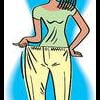Search the Community
Showing results for 'revision'.
Found 17,501 results
-
My revision is scheduled for june 28th. The removal and sleeve are being done at the same time. When is your surgery scheduled?
-


Wish I could just make a decision on this
grumpys wife posted a topic in Tell Your Weight Loss Surgery Story
I am a 49 year old female with a BMI of 35, high blood pressure. For years I have been wanting a lapband but neither my insurance nor my husbands would cover it. Since the kids are now out of school my husband said if you really want this then do it. I talked with a surgeon in my city and then went to Houston to see one that my friend had used. I was all ready to get it scheduled and then when he heard that I wanted to lose 50-60 pounds he said, no I'm not going to do it because you will not lose that much weight and you will be wanting a revision in less than 5 years. He wanted me to do the sleeve and I said no and he still wouldn't do the lapband. Now I am a self pay and this is a real good surgeon. So after crying all the way home I started thinking why would he say this to me if its not true. I believe that you can search these forums and find the responses that you want to find, I always mostly read to good about lapband. I have to say that I can't find too much negative about the sleeve. My only problem is that I am so scared of complications since I am a selfpay. I don't want my family to have financial problems because of me. My husband says whatever I want to do he is behind me but added that he really doesn't think I am big enough to have the surgery, just exercise and follow my diet. Oh of course, I hadn't even thought about that. Anyway, I read these forums daily and just can't decide what to do, its not the money, its not having to deal with eating small portions, its just being scared of a leak. I just want to cry every morning when I get dressed cause I look so fat. -
My doctor told me to plan on 2 nights because mine was revision surgery but I went home the next day because I felt fine
-


Revision Surgery for Dilated Esophagus!
WASaBubbleButt replied to hefftynetty's topic in Revision Weight Loss Surgery Forums (NEW!)
There is a revision specialist by the name of Dr. Husted. He was writing on another board that the latest studies show that if you surgically reposition or replace a band, you have a 70% chance of another slip in the first five years. He was also referring to a conference he went to in FL and this was discussed a great deal and most at this conference will not be surgically repositioning or replacing bands anymore, they have had very low success with this. Is there any chance that a malabsorptive procedure might serve you a little better? You've been struggling for a long time, three years and not at goal yet... maybe you just need a bit more help? -
I am so glad you mentioned a second bulging stomach. I am looking toward to the revision also. But I asked my Dr. why was my upper stomach so huge? He turned, looked at me, and said "I DON'T KNOW" and then turned and walked out the door. I look a good 7 months pregnant. Deep down inside I sort of felt that maybe I had made a second upper belly due to the band always being too tight. Nevertheless; My Dr. never requested any tests to be done no matter how much I complained about stomach issues, port issues or throat issues. I blame myself for not completely following the rules but the wrong foods were easier to swallow. You were 16 and I was 55. No matter how young or old, We both made the wrong choice. I will be seeing another Dr. soon, the appointment has been set.
-
I really don't know how long it will take to stretch out your pouch. I'm jsut recovering now from revision surgery where I have been eating as a good bandster. I still need to slow it down somewhat, but my pouch was HUGE...no idea why it was so big. My band has been empty fort he last 6 weeks so it's really a mystery to us. I don't htink the band itself can stretch though. I will say, if you have to have your band reset, recovery from that is easier than the orgiginal surgery. The progression of foods is a bit faster though I'm too afraid to try anything. It is really the best thing to go slow with fills as the damage that can be caused from being too tight is really quite painful. Hope all is well in this thread
-


Is my goal weight achievable?
Aggiemae replied to canadian_girl's topic in Gastric Sleeve Surgery Forums
I agree with both posters but wanted to add that I chose the sleeve because it maintains normal anatomy. In fact I backed out of getting a lap band several years ago because I was worried about a foreign object because of a preexisting autoimmunity problem and seeing how many people are having them revised I am glad I waited. I am not sure the vertical sleeve was an option, I was offered an RNY . Maybe I had other more pressing medical problems. -
Yes Dr. Kelly is $5500 although since I am a Lapband revision mine is $6000 and then if I get my endoscopy there its another $400. They have to do that in order to determine if this will take me one operation or two. I'm praying one so I don't have to pay another $5500! Nursemichele613, we'll be flying in from Washinton State. Oh good, to know someone here will be same day! We have to keep in touch, ok? This forum is great.
-


Surgeons in South FL and costs. Self pay!
PrnxSSerenity posted a topic in Weight Loss Surgeons & Hospitals
Hi everyone! I need to schedule a revision surgery from the Lap Band to Gastric Sleeve. Unfortunately, surgery wont be covered by insurance so i need to find a surgeon in south florida (miami/ ft lauderdale). Has anyone had the sleeve done is south florida? Who would you recommend and how much did you pay out of pocket? So far i heard about DR. MICHAEL CHOI with Strax Rejuvenation...Anyone have surgery done by him? What are his prices like? BTW- I live out of town but will be doing surgery in s. florida because my family is down there to help me with recovery.-
- surgeons
- gastric sleeve
-
(and 7 more)
Tagged with:
-


AM I GOING TO GAIN WAIT???
mindyloohoo replied to LANENADELCACHEL's topic in PRE-Operation Weight Loss Surgery Q&A
I know how you feel. I was the same. Always hungry. So far the proposed they talk about in the forums is not suppressing hunger for me. I am six weeks out and could eat anything and stll be hungry two hours later. Now, I am a band to sleeve revision and have more of my upper stomach due to band scar tissue. I'm lucky, my surgeon actually called me back yesterday after my email to her about the hunger. She told me I was not eating enough and not often enough. She is ok with me still having a protien shake for breakfast, like you, I am not a morning eater. She doesn't want it to have more then 110 calories with at least 15 protien. Then 3 hours later for a snack, a baby carrot, some celery sticks and cucumbers. 3 hours later at least 3oz lean meat with some broccoli. Another snack of veggies before I leave work, then dinner with meat and green veggies . If still hungry before bed. Half an apple for my sweet item. If said all of this is heavy dense protien and fiber rich food. Should fill me up and clean me out, so to speak. I was also on a supplement from my pcp that my surgeon thought promoted hunger, so we have stopped it for now. I have to email her next week with my results. Hope this helps. -
Hello My friends! I had my lapband removal and sleeve revision done on Monday around noon. I have been home since yesterday afternoon and sadly am not one of you who has been pain free. I was hoping I was going to be pretty "ok" especially since I have a high pain tolerance, am younger and felt like I really prepared myself. I feel like absolute death! Sometimes it hurts to sip, hurts to breath, hurts to move, hurts to just be.... I know this will all pass, but I am just discouraged with the amount of pain I am in. I was sent home with liquid Hydrocodone and am allowed to take 10 ml every 6 hours... I have been using gas X pills as well. They seems to help (a little) when first taken, but definitely only about 1-2 hours long out of the 6 hour time frame. Hope everyone is well. Just focusing on getting myself better
-


Seconds of stomach pains...
LisaNLasVegas replied to fccm04's topic in Tell Your Weight Loss Surgery Story
I currently have a band - gettin a revision to the sleeve on Aug. 5. WIth me, those pains occur when something is getting stuck or a little too big of a bite - it was from my esophagus having spasms because of the stress of getting something down. WIth the band, it is/was a common pain. I'm not so sure if it is normal with the sleeve. I hope not, because one of the reasons I am getting a revision to the sleeve is because I don't want to be in pain every time I eat!! I hope it goes away soon. Try to eat slower - even smaller bites in the beginning. -
Good luck! I'm also having a revision from band to bypass! Surgery for me is 11/6.
-
Yep! I should’ve specified so I edited my post to include RNY. My surgeon said reflux is rampant with sleeve patients and the #1 reason folks come to him for revisions to RNY. Some people just can’t get a handle on it 😥 I hope you can get some relief.
-


Those who have had revisions
former_vbg replied to former_vbg's topic in Revision Weight Loss Surgery Forums (NEW!)
Thanks guys, and I'm glad you posted Tiffkins. I knew you had a revision also, but couldn't remember the details. So, Tiffkins question for you as you seem so knowledgeable about the different surgeries. I'm really leaning towards the Sleeve, but I feel I really need to understand the other options out there but scooping information up from this website and that website and on and on is getting overwhelming and still not really giving me a really good way to understand what my best option would be. I understand speaking with a Bariatric surgeon is a good start, and I will do that as soon as I finish a couple of their hurdles- but a concern I have is that that surgeon typically will specialize in certain procedures which is fine- but then I'm still not going to have all the facts on all the different WL procedures. I'm considering calling my PCP tomorrow and see if he might be any help with helping me digest the information- but as a GP, I'm not sure that's going to yield me the results I want either. I just don't want to hop on the latest fad because its popular right now and then regret it later. Keep the comments coming. -


Those who have had revisions
Tiffykins replied to former_vbg's topic in Revision Weight Loss Surgery Forums (NEW!)
The easiest way for me to break down the surgeries for you is: RNY and DS both malabsorptive. DS is the most complicated, and most drastic with a true switch in how your body metabolizes food, fat, calories. High fat intake is necessary, and the Vitamin regimen is on average of 20-30 Vitamins per day, and this is not an exaggeration. RNY had too many long term complications, and far too many people looking for revisions due to stoma or pouch stretching and high incidence regain. DS was a no go for me. You could not pay me to have that surgery. Sorry, but the malabsorptive rate on DS is far too much for me to accept. I know it's a great surgery for some, but honestly I figured if I couldn't lose and maintain with a restrictive only procedure then I didn't need to be having WLS to begin with. All of the others you've listed are, would not be an option for me, nor did I do tons of research on them. The mini GB is a waste of money. So many people have revised to the full GB because of lack of weight loss. RNY with ring or band is just wasteful and most end up revising, most good surgeons won't In my blog, you'll find my reasons for choosing VSG over RNY for my revision. Google : DS long term complications and vitamin regimen Check out obesityhelp.com and look at the revision board, and RNY board so you can get a good view of other people's experiences. I know more people with complications with RNY and DS than I care to count. Also for me, I found great comfort in doing research on gastrectomies performed for stomach cancer and ulcer patients. Gastrectomies have been performed for over 30 years, and I found a lot of people living very full, healthy, with either most or all of their stomachs gone. The sleeve has actually been performed as the first stage of the DS for around 20 years. It was actually started as the first step for patients with BMIs over 60 as a safety precaution to get them down to a safer weight to either revise to DS or RNY later after losing some weight. The techniques have now been standardized after the first studies came out showing a higher incidence of slight regain (10-20% bounce back) was seen when bigger bougies were used in the stand alone procedures. When the standard size dropped from 50-60fr to 32-40fr bougies, the numbers for complications, weight regain, hunger returning, all decreased. The bougie is the measuring tool they slide down your throat that the surgeon uses to guide the stapler while dissecting the fundus away from the "sleeved" portion of the stomach. The VSG became a noted successful stand alone procedure when those same super morbidly obese patients didn't need the 2nd stage surgery to DS or RNY. Results were that good, that they started offering to lower end BMI patients, and it's since gained in popularity. New research results will be out next summer from 2 of the pioneers of VSG. Dr. Cirangle and Dr. Jossart. I could seriously go on and go on. And don't want to overwhelm you. I think being informed is great, but make sure you get the good, bad and long term ugly on all of the options. The vitamin regimen, and personal friends in real life I have that have dealt with RNY kept me from having it. Neither the DS or RNY fit my lifestyle, and I wasn't willing to have a surgery that would not last a lifetime since I had already had one that failed me miserably. -

U.K. potential sleevers! Stay in the U.K
JT2002TJ replied to Bishbosh's topic in PRE-Operation Weight Loss Surgery Q&A
I'm so sorry. Good luck, I can't imagine having to have 2 surgeries so close together. Will this revision be covered under NHS, without a major wait? -


Must Read! How the Lap band "SHOULD work" "Green Zone" in fills
NaNa posted a topic in LAP-BAND Surgery Forums
Hello... I thought I would post this must read article by the surgeon who invented the "Green Zone" and how the band should "ideally work".... http://bariatrictime...1/#comment-2133 Gastric Banding and the Fine Art of Eating BT Online Editor | September 22, 2011 by Paul O’Brien, MD Dr. O’Brien is from the Centre for Obesity Research and Education (CORE), Monash University, Melbourne, Australia. Bariatric Times. 2011;8(9):18–21 Funding: No funding was received for the preparation of this article. Financial Disclosure: Dr. Paul O’Brien is the Emeritus Director of the Centre for Obesity Research and Education (CORE) at Monash University, which receives a grant from Allergan for research support. The grant is not tied to any specified research projects and Allergan has no control of the protocol, analysis and reporting of any studies. CORE also receives a grant from Applied Medical toward educational programs. Dr. O’Brien has written a patient information book entitled The Lap-Band Solution: A Partnership for Weight Loss, which is given to patients without charge, but some are sold to surgeons and others for which he receives a royalty. Dr. O’Brien is employed as the National Medical Director for the American Institute of Gastric Banding, a multicenter facility, based in Dallas, Texas, that treats obesity predominantly by gastric banding. Abstract The author reviews the physiology of eating and what the adjustable gastric band does to the function of the distal esophagus and upper stomach of the patient. The author also provides the “Eight Golden Rules” on proper eating habits for patients of laparoscopic adjustable gastric banding, including what, when, and how they should eat, in order to achieve optimal weight loss results. Introduction Laparoscopic adjustable gastric banding (LAGB) has been shown to enable patients with obesity to achieve substantial, durable, and safe weight loss,[1,2] which can help reduce or resolve multiple diseases,[3] improve quality of life, and prolong survival in patients with obesity.[4] LAGB is a weight loss surgical procedure performed solely for the purpose of affecting a key physiological function in weight loss, appetite control. In 2005, we conducted a randomized, blinded, crossover trial that showed that the LAGB controls the appetite.[5] However, if the LAGB is not placed properly or if the patient does not eat properly, it will not perform at an optimal level. For example, if the band is placed too loosely, then it will not provide the proper level of reduced satiety and appetite, and likely will have little effect on the patient’s weight and health. If the band is placed too tightly or if patient eats too fast or takes large bites of food, slips and enlargements can occur, leading to reflux, heartburn, vomiting, and sometimes the need for revision. Optimally, the band should be adjusted so that it squeezes the stomach at just the right pressure. If the patient eats correctly and the band is placed correctly, the LAGB should adequately control the patient’s appetite, resulting in optimal weight loss. The Physiology of LAGB Dr. Paul Burton, a bariatric surgeon at the Centre for Obesity Research and Education, Melbourne Australia, has studied the physiology and the pathophysiology of the LAGB closely. He used high-resolution video manometry, isotope transit studies, endoscopy, and contrast imaging to understand what happens during eating in normal controls, eating in patients who are doing well after LAGB, and eating in patients who have symptoms of reflux, heartburn, and/or vomiting after LAGB.[7–15] In Burton’s series of articles, he concluded that in LAGB, it is not the band that fails, but rather the patients who receive the band and, more importantly, the doctors who care for them. Many years ago at the Centre for Obesity Research and Education (CORE), my colleagues and I developed the Green Zone chart, a conceptual way of identifying the optimal level of band restriction (Figure 1). When a patient is in the yellow zone, it is an indication that the band is too loose. When in the yellow zone, a patient may be eating too easily, feeling hungry, and not losing weight. When a patient is in the green zone, he or she does not feel hungry, is satisfied with small amounts of food, and is achieving weight loss or maintaining a satisfactory level of reduced weight. When a patient is in the the red zone, it is an indication that the band is too tight. The patient experiences reflux, heartburn, and vomiting. The range of food the patient in the red zone can eat after undergoing LAGB is limited and he or she may start to eat abnormally (so-called maladaptive eating), favoring softer, smoother foods like ice cream and chocolate. While in the red zone, patients will not lose weight as effectively and they may even gain weight. Burton measured the pressure within the upper stomach beneath the band in numerous patients when they were in the green zone. He found the optimal pressure was typically 25 to 30mmHg. The art of adjustment is to find the level of Fluid in the band that achieves that pressure range. That level of pressure generates a background sense of satiety that persists throughout the day. The patient, when correctly adjusted, normally will not feel hungry upon waking in the morning, and throughout the day should feel much less hungry than he or she did before band placement. In my experience, it is common for LAGB patients to have no feeling of hunger in the morning. Then, during the day, a modest level of hunger will develop, which a small meal should satisfy. One of the key lessons learned from Burton’s studies was that each bite of food should pass across the band completely before another bite is swallowed. There is no pouch or small stomach above the band and there should never be food sitting there waiting. The esophagus is a powerful muscular organ that typically generates pressures of 100 to 150mmHg, but it is capable of generating pressures above 200mmHg. Esophageal peristalsis squeezes the bite of food down toward the band and then progressively squeezes that bite across the band. Each bite must be squeezed across the band before the next bite starts to arrive. Figure 2 shows a bite in transit across the band. A single bite of food, chewed well until it is mush, will move down the esophagus by peristalsis. At the level of the band, the esophageal peristalsis will squeeze that bolus of food across the band. It takes multiple squeezes (usually 2–6 squeezes or peristaltic waves) to get that bite of food across in a patient with a well-adjusted band (Figure 2). Those squeezes generate a feeling of not being hungry and stimulate a message that passes to the hypothalamus to indicate that no more food is needed. If a single bite of food is able to generate between two and six waves of signal, a meal of 20 bites may generate 100 or more signals. This is enough to satisfy a person and is enough to signal him or her to stop eating. We recognize two terms for appetite control, satiety and satiation. Satiety refers to the background control of hunger that is present throughout the day regardless of eating. In the LAGB patient, satiety is generated by the band exerting a constant compression on the cardia. Satiation is the early control of hunger that comes with eating. In the LAGB patient, satiation is generated by the squeezing of the bolus of food across the band during a meal. Each squeeze adds to the satiation signal. There are sensors in the cardia of the stomach that detect this squeezing. The exact nature of these sensors is still to be confirmed but they must be either hormonal or neural. We know that satiety and satiation are not mediated by one of the hormones currently known to arise from the upper stomach.[16] Ghrelin is a hormone that stimulates appetite. A number of hormones that can be derived from the cardia of the stomach are known to reduce appetite. None of these hormones are found to be raised in the basal state after gastric banding and none can be shown to rise significantly after each meal.[16] Vagal afferents are plentiful in the cardia, and one group of afferents has a particular structure that lends itself to recognizing the compression of the gastric wall associated with squeezing of the bite of food across the band. In my opinion, the intraganglionic laminar endings, better known as IGLEs, are the most likely candidate as mediator of the background of satiety throughout the day and the early satiation after a meal. The IGLEs lie attached to the sheath of the myenteric ganglia and are known to detect tension within the wall of the stomach. They are low-threshold and slowly adapting sensors and therefore are optimal for detecting continued compression of cardia of the stomach over a 24-hour period. The several squeezes that go with the transit of each bite stimulate the IGLEs further. The signal passes to the arcuate nucleus of the hypothalamus and the drive to eat is reduced. The lower esophageal contractile segment. Burton developed the concept of the lower esophageal contractile segment (LECS). It is made up of four parts: the esophagus, the lower esophageal sphincter, the proximal stomach (including the 1cm or so above the band and the 2cm of stomach behind the band), and the band itself (Figure 3). As the esophagus squeezes the bolus of food down toward the band, the lower esophageal sphincter relaxes as this peristaltic wave approaches. It then generates an after-contraction, which can maintain some of the pressure of the peristaltic wave as a part of the food bolus is squeezed into that small segment of upper stomach. The upper stomach, including the area under the band, is sensitive to these pressures. It generates signals to the hypothalamus. These signals may be hormonal but are more likely to be neural. A correctly adjusted band will generate a basal intraluminal pressure of 25 to 30mmHg, providing a resistance to flow. The segment of the bolus that is squeezed through generates more signals from that area. Keeping the LECS intact is a key requirement for success with the gastric band. Bad eating habits (e.g., insufficient chewing, eating too quickly, taking bites that are too large) hurt the LECS. If those bad habits go on for long enough, stretching occurs and the power of peristalsis is lost, leading to the return of hunger (Figure 4).[11,12] The Fine Art of Eating A quality aftercare program is essential to successful weight loss in patients after LAGB. Before making the decision to proceed with LAGB in patients, I promise my patients three things: 1) to place the band in the optimal position safely and securely, 2) that they will have permanent access to a skilled aftercare program, and 3) that I will give them the information they need to obtain the best possible weight loss from the band. In return, I ask for three commitments from my patients: 1) that they follow the rules regarding eating after undergoing the procedure, 2) that they follow the rules regarding exercise and activity, and 3) that they always come back for follow up no matter how many years have passed.[6] The “Eight Golden Rules.” At my facility, we summarized guidelines for eating after LAGB into what we call the “Eight Golden Rules” (Table 1). These rules are included in a book and DVD given to every patient who undergoes LAGB at the facility.[6] The rules are also posted on www.lapbandaustralia.com.au and are reinforced at most aftercare visits. These eight golden rules must become part of each patient’s life. The effect of the LAGB procedure on hunger facilitates a patient’s adherence to the rules, making it more likely that he or she will follow them. However, achieving positive results with LAGB requires a working partnership between the physician and patient. Adhering to these rules is the patient’s part of the partnership, and he or she ultimately is responsible for the success or failure of weight loss following LAGB. What to eat. After undergoing LAGB, patients should eat small amounts of “good food,” meaning food that is Protein rich, of high quality, and in solid form. Each meal should consist of 125mL or 125g (i.e., about half of a cup of food). This measure of “half a cup” is a concept rather than a real measure of food, as some foods, such as vegetables and fruit, are composed largely of Water and this has to be allowed for in some way. Thus, I allow exceeding the “half a cup” limit a little for vegetables and fruit. We instruct patients to put each meal on a small plate and to use a small fork or spoon. The patient should not expect to finish all of the food on the plate, but rather he or she should plan to stop when he or she is no longer hungry. Any food left on the plate should be discarded. Protein-rich foods. Protein is the most important macronutrient in the food a LAGB patient eats. At our clinic, we recommend that our patients consume approximately 50g of protein per day. We have measured protein intake of our patients (Table 2) and have monitored their blood levels. We have not seen any protein malnutrition after LAGB, indicating that a daily intake of about 50g a day is sufficient. Table 2 shows the energy and macronutrient intake of 129 consecutive patients measured before and at one year after LAGB. Note the mean energy intake is reduced by approximately 1500kcals.[17] The best source of protein is meat; however, red meats, such as beef and lamb, tend to be difficult to break up with chewing in order to be sufficiently turned into mush. It is much easier to break up fish with chewing, and many fish are high in protein, including shellfish. chicken, duck, quail, and other birds can also be cooked to be easily chewed to mush before being swallowed. eggs and dairy, including cheese and yogurt, are also excellent protein sources. For nonanimal sources of protein, a patient should consider lentils, chickpeas, and Beans. Half of the “half a cup” allotment per meal should comprise protein-rich food. The other half should be made up of vegetables and/or fruits. I recommend to my patients that they eat more vegetables than fruit because vegetables have less sugar. Any space left in the “half a cup” can be used for the starches, (e.g., bread, Pasta, rice, cereals, potatoes), though I recommend to my patients that they eat a minimal amount from this group of foods as they tend to provide no important nutritional benefit. High-quality foods. High-quality food are foods that are minimally processed, natural, and whole. We encourage our patients to look for quality over quantity—for example, they might try sashimi-grade tuna, smoked salmon, duck breast, lobster, or even a simple poached egg. It is also important to remind your patients that there is no limit to the amount of herbs and spices that can be used to enhance the flavors of their foods. Solid foods. The patient should choose solid foods over liquids whenever possible. Liquids pass too quickly across the palate and, more importantly, too quickly across the band. There is no need for the esophagus to squeeze liquid, and without the squeeze, there is no stimulation of the IGLEs and no induction of satiety; therefore, eating calorie-containing liquids may negatively impact a patient’s weight loss. When to eat. After undergoing LAGB, a patient should eat three or less times per day. If the patient is in the green zone, meaning that the band is adjusted correctly, there should be no need for him or her to eat between meals. In fact, even three meals a day may be more than needed for satiety. In my experience, patients have little interest in eating in the morning. By late morning or early afternoon, patients may start to notice some hunger, which indicates that it is time to have a first small meal. In the evening, patients may have another meal. Most importantly, patients should be instructed that a meal missed is not to be replaced later on. The typical human body is satisfied with a maximum of three meals per day but often is happy to accept two or even one meal per day. Patients should be reminded that there should be no snacking between meals. If a patient finds that he or she is hungry by late afternoon, encourage him or her to eat something small and of high quality, such as a piece of fruit or some vegetables, just to tide him or her over until the evening meal. The patient should then visit the clinic to check whether or not he or she is in the Green Zone. It is important that the patient adhere to the aftercare program to monitor whether or not he or she is in the green zone. If not in the green zone, the patient will need to have fluid in the band increased or decreased. How to eat. Take a small bite and chew well. The “half a cup” of food should be placed on a small plate. The patient should use a small fork or a small spoon to eat. A single bite of food should be chewed carefully for 20 seconds. This provides the opportunity to reduce that bite of food to mush. It also provides the important opportunity for the patient to actually enjoy the taste, the texture, and the flavor of the food. Encourage your patients to enjoy eating more than they ever have. After chewing the food until it is mush, the patient should swallow that bite. Swallow, then wait a minute. The patient must wait for that bite to go completely across the band before swallowing another bite. Normally, it will take between two and six peristaltic waves passing down the esophagus, which can take up to one minute. This is probably the biggest challenge of educating the patient who has undergone LAGB. You must instruct the patient to eat slowly—chew well, swallow, and then wait one minute. A meal should not go on for more than 20 minutes. At one bite per minute, that is just 20 small bites. The patient probably will not finish the “half a cup” of food in this time. In this case, the patient should throw away the rest of the food. After undergoing LAGB, the patient should always expect to throw away food and to never eat everything on the plate. If it takes between two and six squeezes to get a single bite of food across the band and each squeeze generates satiety signals, then 20 bites should be generating 40 to 120 signals. The actual number will depend on the consistency of the food, the tightness of the band, and the power of the esophagus. With good eating practices and optimal band adjustments, the patient should not be hungry after 20 bites or less. As soon as the patient is no longer hungry, he or she should stop eating. After undergoing LAGB, the patient should never expect to feel full. Feeling full means stasis of food above the band and distension of that important part of the LECS above the band. This destroys the LECS, the mechanism that enables optimal eating behavior and appetite control. A patient should always keep this process in mind. If the patient finds that after eating the “half a cup” of food he or she is still hungry, he or she should review his or her eating practices, correct the errors, and consider the need for further adjustment of the band. If this is occurring, it is usually an indication that the patient is not in the green zone. Eat a small amount of good food slowly. These eight words are the key to success. Small amount refers to small bites, the small fork (e.g., oyster fork), and a total meal size of half a cup. Good food refers to protein-rich, high-quality, and solid food. Slowly refers to chewing well, swallowing, and waiting a minute. Try to repeat these eight words to every patient every time you see them. Get them to repeat it at every meal. The failure of the gastric band can almost always be traced to failure of this process. Addressing the Challenges The two principal challenges after LAGB are weight loss failure and the need for revisional surgery due to proximal enlargements above the band. Weight loss failure will occur if the band is not placed or adjusted correctly or if the patient does not adhere to the guidelines of proper eating and exercise. When a patient is not achieving results after his or her LAGB operation, the doctor should check to ensure that the band is correctly and safely placed. The most common reason for weight loss failure is poor eating behavior, which leads to enlargement above the band. There are three common eating errors: 1. The patient is not chewing the food adequately. Food must be reduced to mush before swallowing. If it cannot be reduced to mush, it is better for the patient to spit it out (discreetly) than to swallow it. 2. The patient is eating too quickly. Each bite of food should be completely squeezed across the band before the second bite arrives. 3. The patient is taking bites that are too big to pass through the band. Each of these errors leads to a build up of food above the band where there is no existing space to accommodate it (Figure 4). Space is then created by enlargement of the small section of stomach or by enlargement of the distal esophagus, both of which can compromise the elegant structure of the LECS. If the LECS is stretched, it cannot squeeze. Without the squeezing, satiation is not induced. When satiation is not induced, hunger persists, more eating occurs, and stretching continues. If our patient continues this each day for a year, it is inevitable that chronic enlargement will occur, the physiological basis for satiety and satiation is harmed, and stasis, reflux, heartburn, and vomiting supervene. The doctor should continually review the Eight Golden Rules for proper eating and exercise with each patient. For optimal weight loss following LAGB, the patient should have access to a comprehensive long-term aftercare program for clinical support and optimal band adjustments and he or she must follow the guidelines regarding eating and exercising for the rest of his or her life. “Eat a small amount of good food slowly” is the key to optimizing the gastric band. -


To All My Fellow June Sleevers........
NikNakMcCants replied to NikNakMcCants's topic in PRE-Operation Weight Loss Surgery Q&A
Well I am already three days post op. I continue to do well. I have no hunger. I am able to get in all my fluids and protein. I just set myself up a schedule and sip sip sip all day. I am still tired but not as much as yesterday. I have mild pain when changing position from laying to standing. My big problem is that I have developed an allergy to the surgical glue. My whole tummy is red and inflamed. Some spots are blistered. Ice packs help. I have to call in the am to see if I can take some Benedryl for the itch. Other than that it has been smooth sailing. I am so lucky. Because I was a band to sleeve revision, there was a greater chance for complications. I really thought it would be much worse. -
Morning all, ok I had my revision on the 28th of May.. I have only lost 15 lbs including pre surgery.. what is the deal... im mean I barely eat, I drink all the recommended water. Why is tge weight not just falling off?
-
I was banded several years ago and my doctor said he can't do anything else for me. I have severe esophageal spasms and it is causing stomach acid to stay in my throat, causing me to choke at night, etc. He said what I should consider is revision to gastric bypass, but I have to see a specialist first to make sure I don't have some disorder where my esophagus does not open and close correctly. The biggest hurdle is my BMI is 37 and I have no co-morbidities - he said having pcos will not be enough - and he says insurance is going to give me trouble about that. I will likely have to appeal. And revision surgery scares me a bit. I am not going to purposely gain weight - my psychiatrist will never write a letter if I do that. I am so bummed out. He had been doing fluoro fills and it looked like the band was way to tight so he was shocked when he did a transnasal endoscopy how lose the band actually is. I have put so much work into this. This just sucks.
-
I would recommend the sleeve. Doctors are offering it more now because insurance companies have caught on to the high success rate it has, and are now covering the procedure. FYI I was told that if you are not happy with the sleeve you could have it revised to RNY, although this choice is very rare. BTW I am 11 days post op and love my sleeve so far. Good luck to you.
-


Anyone had second thoughts?
iamsoworthit replied to jgarcia323's topic in Gastric Bypass Surgery Forums
Exactly my sentiments! No regrets on my revision from band to rny either. Best decision of my life!!! -


Anyone had second thoughts?
Jramosg323 replied to jgarcia323's topic in Gastric Bypass Surgery Forums
Thanks for your input. It helps to read others experiences. I hope that I am as succesful as you are. I am 27 yrs old. First Lap Band surgery was in Feb, 2008. Revision was in Feb, 2012. I dont have a surgery date for GP, but it should be sometime end June/ begin July. I am waiting for authorization from my insurance. -


Desperate in Seattle
Starwarsandcupcakes replied to Janine253's topic in Gastric Bypass Surgery Forums
I was weak and in pain for almost 7 weeks after my revision. I also had left sided pain. I brought mine up to my surgeon and he sent me for an upper GI with barium swallow. So definitely bring up the pain. It’s worth investigating.













